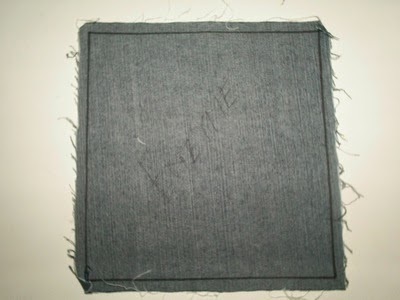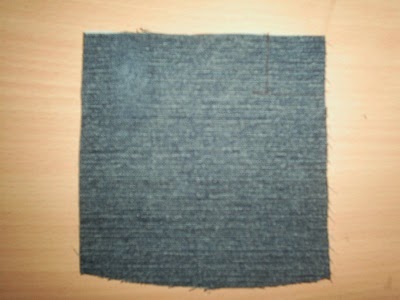Now You Know Garment Washing: An Effective Process for Beautification of Garments (Part-8)
Monday, 4 February 2019
Edit
Garment Washing: An Effective Process for Beautification of Garments (Part-8)
Rahat Khan
Dept. of Apparel Manufacturing
Atish Dipankar University of Science and Technology
Cell: +8801717781833
Email: rahat.info@gmail.com
Dept. of Apparel Manufacturing
Atish Dipankar University of Science and Technology
Cell: +8801717781833
Email: rahat.info@gmail.com
Previous Part
5.1.4 Dimensional stability test:
This test method is intended for determining the dimensional changes of woven fabric, when subjected to repeated automatic laundering process commonly used at home.
Dimensional change:
In general sense the changes in length or width of a fabric, specimen subjected to specify condition is known as dimensional change.
Shrinkage:
A dimensional change resulting in a decrease in the length or width of a specimen subjected to specified condition is known as shrinkage. Shrinkage % means how much percentage will shrink after wash.
Apparatus:
- Automatic washing machine
- Dryer
- Stainless steel container
- Commercial detergent
- Measuring scale
- Weight balance
For woven fabric:
The specimen size is 22cmX22cm and mark with 20X20cm parallel to warp and weft direction respectively.
 |
| Fig-25: Sample (For Shrinkage) |
- The specimen of 22X22cm was taken.
- The detergent into stainless steel container was taken.
- Then the detergent was dissolved
- The specimen was putted into it and then the stainless steel container was kept into the machine.
- Machine was started running.
- The temperature was raised up to 600c and kept it 30 min.
- The specimen was removed.
- Water was extracted by squeezing then took it into the dryer up to 600 c .
Recipe:
% Dimensional changes = (A-B)/AX100
Where,
A=Original dimension
B=Dimension after laundering
Experimental data:
1. For denim fabric without washing (Basic):
2. For light bleach:
- Detergent: 5gm/L
- M: L 1:50
- Time 30 min
- Temparature: 600 c
% Dimensional changes = (A-B)/AX100
Where,
A=Original dimension
B=Dimension after laundering
Experimental data:
1. For denim fabric without washing (Basic):
Before wash(cm) | After wash(cm) | % Change | |
Length wise | 20 | 19.4 | 3% |
Width wise | 20 | 19.2 | 4% |
2. For light bleach:
Before wash(cm) | After wash(cm) | % Change | |
Length wise | 20 | 19.7 | 1.5% |
Width wise | 20 | 19 | 5% |
3. For medium bleach:
Before wash(cm) | After wash(cm) | % Change | |
Length wise | 20 | 19.8 | 1% |
Width wise | 20 | 19.2 | 4% |
4. For enzyme:
Before wash(cm) | After wash(cm) | % Change | |
Length wise | 20 | 19.7 | 1.5% |
Width wise | 20 | 19.2 | 4% |
5. For stone enzyme:
Before wash(cm) | After wash(cm) | % Change | |
Length wise | 20 | 19.8 | 1% |
Width wise | 20 | 19.5 | 2.5% |
6. Hand whicker:
Before wash(cm) | After wash(cm) | % Change | |
Length wise | 20 | 19.8 | 1% |
Width wise | 20 | 19.6 | 2% |
7. Pattern whicker:
Before wash(cm) | After wash(cm) | % Change | |
Length wise | 20 | 19.6 | 2% |
Width wise | 20 | 19.2 | 4% |
5.1.5 Weight loss:
Weight loss is a process by which how much weight reduced from the basic sample after washing can be known. The weight of the sample loss varied in different washing.
The basic sample of 10cmX10cm was taken, then weighted and compared with other washing samples.
The result can be determined from (Actual sample weight-Washing sample weight)
Difference between basic sample & washed sample:
The basic sample of 10cmX10cm was taken, then weighted and compared with other washing samples.
 |
| Fig-26: Sample (4X4 inch) |
Difference between basic sample & washed sample:
No. | Sample type | Basic sample weight (gm) | Washed sample weight (gm) | Difference (gm) | Change % |
1. | Denim fabric without wash(basic sample) | 2.79 | 2.79 | 0 | 0 |
2. | Light bleach | 2.57 | 0.22 | 7.88 | |
3. | Medium bleach | 2.55 | 0.24 | 8.6 | |
4. | Stone enzyme | 2.77 | 0.02 | .71 | |
5. | Enzyme | 2.72 | 0.07 | 2.5 | |
6. | Pattern whickering | 2.55 | 0.24 | 8.6 | |
7. | Hand whickering | 2.64 | 0.13 | 4.65 | |
8. | Potassium permanganate | 2.73 | 0.04 | 1.43 |